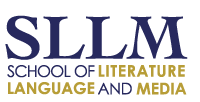South African Sign Language: Introductory Linguistics
This course explains the basic concepts of South African Sign Language linguistics by introducing the fundamental areas of linguistic inquiry – phonology, morphology, syntax, semantics, and the use of language. It enables students who already are fluent in SASL to analyse and think critically about the structure of SASL. Students are exposed to visual texts illustrating these concepts and to a range of readings confirming research results.
South African Sign Language: Advanced III
This course extends the investigation of the structure of South African Sign Language (SASL) to the level of discourse and pragmatics. The expectations for comprehension and production of SASL are commensurate with an advanced level of study. Students will be expected to cope with SASL linguistic and sociolinguistic variation, including regional and social register. They will be expected to create and analyse SASL visual texts.
South African Sign Language Poetry and Storytelling
This course explores South African Deaf community norms for the situationally appropriate and persuasive use of language. Cross-cultural communication between various segments of the community will be analysed to understand what distinguishes these segments and what holds the community together as a whole. These topics will provide the material for the students’ continuing acquisition of vocabulary and grammar.
South African Sign Language Sociolinguistics
Students will compare South African Sign Language (SASL) with other signed languages, both natural and artificial, on the levels of the linguistic system already covered. A comparison will also be made between signed and spoken languages. Historical and typological relationships between SASL and other languages will be examined. Discussion of these topics will provide for the students’ continuing acquisition of vocabulary and grammar.



